chemicals
 When Roy Plunkett went to work that day, his plan was to make a better refrigerator. Plunkett was a chemist who worked for a company named DuPont. It was a dream job for a 27-year-old man, just starting his working career. A plan had been forming in his brain as to how the refrigerator could be improved. The chemicals necessary were a gas named Tetrafluoroethylene and Hydrochloric Acid. He has gathered the chemicals together, but he wasn’t quite ready to start experimenting yet, so he cooled and pressurized the Tetrafluoroethylene gas in canisters overnight, planning to get started bright and early the next morning.
When Roy Plunkett went to work that day, his plan was to make a better refrigerator. Plunkett was a chemist who worked for a company named DuPont. It was a dream job for a 27-year-old man, just starting his working career. A plan had been forming in his brain as to how the refrigerator could be improved. The chemicals necessary were a gas named Tetrafluoroethylene and Hydrochloric Acid. He has gathered the chemicals together, but he wasn’t quite ready to start experimenting yet, so he cooled and pressurized the Tetrafluoroethylene gas in canisters overnight, planning to get started bright and early the next morning.
When Plunkett returned the next day, he found that there was no gas in the canisters. Oddly, the canisters weighed the same amount as when they were full, but nothing came out of them. Well, this was confusing!! Where did all the gas go? Now, Plunkett was intrigued, so he cut the canisters in half. During the cooling process, the gas had solidified on the sides of the canisters, creating a slick surface. I can only imagine what their thoughts were on that. They had to figure out what had happened. The use of the chemical was one thing, but curiosity about what had happened was more than Plunkett to stand to just let go.
According to the account in DuPont’s history annals, “Rather than discard the apparent mistake, Plunkett and his assistant tested the new polymer and found that it had some very unusual properties: it was extremely slippery as well as inert to virtually all chemicals, including highly corrosive acids. The product, trademarked as Teflon in 1945, was first used by the military in artillery shell fuses and in the production of nuclear material for the Manhattan Project.” Of course, these days, we all know about Teflon. The main use is in non-stick cookware. It has other uses, but that is the one we all would know, because Teflon became a household word. Any cook, chef, homemaker, or even bachelor, knows about Teflon cookware. It’s big part of cooking life.
 While cookware is the main thing that Teflon is used for, Plunkett wasn’t thinking of cookware when he invented it. In fact, it wasn’t until a decade after Plunkett sawed those canisters in half, that a French engineer named Marc Grégoire saw the cookware value and introduced “Tefal” pans…the first to be lined in Teflon. The funny thing is that the idea actually came from his wife. I suppose that the person who normally did the cooking in those days, would be the one to see the value in a non-stick finish. Before Tefal, Grégoire used Teflon on his fishing tackle to prevent tangling. The guys thought of fairly good uses, but Grégoire’s wife realized that the nonstick surface would be perfect for cookware.
While cookware is the main thing that Teflon is used for, Plunkett wasn’t thinking of cookware when he invented it. In fact, it wasn’t until a decade after Plunkett sawed those canisters in half, that a French engineer named Marc Grégoire saw the cookware value and introduced “Tefal” pans…the first to be lined in Teflon. The funny thing is that the idea actually came from his wife. I suppose that the person who normally did the cooking in those days, would be the one to see the value in a non-stick finish. Before Tefal, Grégoire used Teflon on his fishing tackle to prevent tangling. The guys thought of fairly good uses, but Grégoire’s wife realized that the nonstick surface would be perfect for cookware.
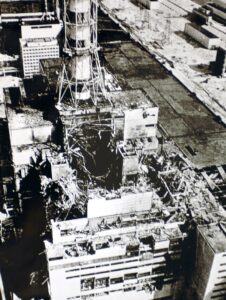 When we see a fire, we usually give little thought to the firefighter first responders who run into the scene. They usually give little thought to what dangers might lie in wait for them…or sometimes they already know what is inside. They know that dangerous chemicals and combinations of chemicals are very likely in the building, and that these chemicals might be dangerous, either during the fire, or even for years after the fire. Nevertheless, firefighter first responders run into the fire, and into serious danger every day.
When we see a fire, we usually give little thought to the firefighter first responders who run into the scene. They usually give little thought to what dangers might lie in wait for them…or sometimes they already know what is inside. They know that dangerous chemicals and combinations of chemicals are very likely in the building, and that these chemicals might be dangerous, either during the fire, or even for years after the fire. Nevertheless, firefighter first responders run into the fire, and into serious danger every day.
Sometimes, the danger is far worse than the average fire, and when the firefighter first responders run into the building, they know that they are very likely running into a scene that will probably bring about their own demise. When the Chernobyl Nuclear Power Plant disaster began on April 26, 1986, Vladimir Pravik was one of the first 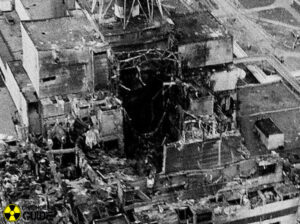 firefighters to reach the scene. Upon entering, he was hit with radiation so strong that it changed his eye color from brown to blue. I have no idea how it must have felt to be hit with that much radiation, or if that is something you would immediately feel at all. I can’t say that I know that much about radiation.
firefighters to reach the scene. Upon entering, he was hit with radiation so strong that it changed his eye color from brown to blue. I have no idea how it must have felt to be hit with that much radiation, or if that is something you would immediately feel at all. I can’t say that I know that much about radiation.
Whether Pravik felt anything or not, doesn’t really matter, nor is it something we can ever ask him, because like the majority of the first responders to the radioactive disaster, Pravik died 15 days later from severe radiation poisoning. When we look at the damage radiation can do to people, it is totally devastating. These firefighter first responders ran into the scene of a terrible disaster, and gave no thought how the situation was going to affect them. They very likely knew that it was going to kill them, but there were people inside the  plant who were suffering, and even dying. These firefighter first responders set aside their own need to be safe, and ran into the radiation-filled plant anyway. For most of them, their equipment did not include any gear to protect them from radiation, hence the eye color change Pravik experienced. Some of them may not have known the dangers, but I believe that most of them did, and that makes them even more heroic and courageous. Their selfless actions probably didn’t save any lives inside the plant, but maybe it limited the wide-spread effects and possible saved a few lives outside the facility.
plant who were suffering, and even dying. These firefighter first responders set aside their own need to be safe, and ran into the radiation-filled plant anyway. For most of them, their equipment did not include any gear to protect them from radiation, hence the eye color change Pravik experienced. Some of them may not have known the dangers, but I believe that most of them did, and that makes them even more heroic and courageous. Their selfless actions probably didn’t save any lives inside the plant, but maybe it limited the wide-spread effects and possible saved a few lives outside the facility.
 During World War I, Britain, like the United States would have to do in World War II, had to employ large numbers of women into jobs vacated by men who had gone to fight in the war. They also had to create new jobs as part of the war effort. As an example, women were hired in munitions factories. The high demand for weapons resulted in the munitions factories becoming the largest single employer of women during 1918. It was a job that many people resisted, mainly because it was seen as “men’s work.” When I think about the work these women were doing, I find myself much more concerned with the toxicity and danger of the materials they were working with, than whether or not the job should be done by a man. Of course, the materials would present the same danger to the men, but the men had always felt like the dangerous work should fall to them.
During World War I, Britain, like the United States would have to do in World War II, had to employ large numbers of women into jobs vacated by men who had gone to fight in the war. They also had to create new jobs as part of the war effort. As an example, women were hired in munitions factories. The high demand for weapons resulted in the munitions factories becoming the largest single employer of women during 1918. It was a job that many people resisted, mainly because it was seen as “men’s work.” When I think about the work these women were doing, I find myself much more concerned with the toxicity and danger of the materials they were working with, than whether or not the job should be done by a man. Of course, the materials would present the same danger to the men, but the men had always felt like the dangerous work should fall to them.
Nevertheless, with the introduction of conscription in 1916 everything changed. Conscription refers to the process of automatically calling up men and women for military service. During the First World War men (it only applied to men at this time) who were conscripted into the armed forces had no choice but to go and fight, even if they did not want to. Around 1916, with the need becoming serious, the government began  coordinating the employment of women through campaigns and recruitment drives. This led to women working in areas of work that were formerly reserved for men. Jobs such as, for example railway guards, ticket collectors, buses, tram conductors, postal workers, police, firefighters, as well as bank tellers and clerks. Some women also worked heavy or precision machinery in engineering, led cart horses on farms, and worked in the civil service and factories.
coordinating the employment of women through campaigns and recruitment drives. This led to women working in areas of work that were formerly reserved for men. Jobs such as, for example railway guards, ticket collectors, buses, tram conductors, postal workers, police, firefighters, as well as bank tellers and clerks. Some women also worked heavy or precision machinery in engineering, led cart horses on farms, and worked in the civil service and factories.
By 1917 the British munitions factories, which by this time, primarily employed women workers, produced 80% of the weapons and shells used by the British Army. The women working there soon became known as “canaries” because they had to handle TNT (the chemical compound trinitrotoluene that is used as an explosive agent in munitions) which caused their skin to turn yellow. The nickname might have been a cute joke, but the job the women did was far from funny. These women risked their lives working with poisonous substances without adequate protective clothing or the required safety measures, that we know are needed now. During the years of World War I, around 400 women died from overexposure to TNT. I wonder too, how many died in 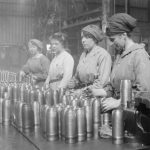 the years that followed the war, from exposure to the same chemicals that had killed the original 400 women.
the years that followed the war, from exposure to the same chemicals that had killed the original 400 women.
As if the dangerous working conditions weren’t enough, women were also paid significantly less than men in comparable positions. In 1918, women workers on London’s buses, trams, and subways organized a strike and managed to win equal pay for equal work. When the war ended, many women were fired to free up jobs for returning veterans. Some thanks that was. I’m sure many of the women were glad to go back to their prior jobs, or go home to take care of their families, but to be fired” was just wrong in every way. Nevertheless, in return for their hard work, these women were fired so that the returning men could have a job again.
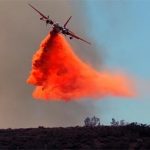 The Vietnam war was many things, but I don’t think anyone really expected Operation Ranch Hand…at least not the general public. Who would have expected such a heinous act to be carried out by the government. Operation Ranch Hand was a United States military operation during the Vietnam War, lasting from 1962 until 1971. The operation was largely inspired by the British use of 2,4,5-T and 2,4-D (Agent Orange) during the Malayan Emergency in the 1950s. It was part of the overall program during the war called “Operation Trail Dust.” Ranch Hand involved spraying an estimated 20 million United States gallons of defoliants and herbicides over rural areas of South Vietnam in an attempt to deprive the Viet Cong of food and vegetation cover. Nearly 20,000 sorties were flown between 1961 and 1971.
The Vietnam war was many things, but I don’t think anyone really expected Operation Ranch Hand…at least not the general public. Who would have expected such a heinous act to be carried out by the government. Operation Ranch Hand was a United States military operation during the Vietnam War, lasting from 1962 until 1971. The operation was largely inspired by the British use of 2,4,5-T and 2,4-D (Agent Orange) during the Malayan Emergency in the 1950s. It was part of the overall program during the war called “Operation Trail Dust.” Ranch Hand involved spraying an estimated 20 million United States gallons of defoliants and herbicides over rural areas of South Vietnam in an attempt to deprive the Viet Cong of food and vegetation cover. Nearly 20,000 sorties were flown between 1961 and 1971.
It’s hard to say if the government knew the consequences of the chemicals that were used. It’s possible that the chemicals were thought to just kill vegetation, and not to hurt people. The people involved were known as  Ranch Handers. I seriously doubt that at some point they didn’t wonder if what they were doing could possibly be harmful to the people they were spraying it on or near. Nevertheless, the “Ranch Handers” had a motto, “Only you can prevent a forest.” It was a take on the popular United States Forest Service poster slogan of Smokey Bear. During the ten years of spraying, over 5 million acres of forest and 500,000 acres of crops were heavily damaged or destroyed. Around 20% of the forests of South Vietnam were sprayed at least once.
Ranch Handers. I seriously doubt that at some point they didn’t wonder if what they were doing could possibly be harmful to the people they were spraying it on or near. Nevertheless, the “Ranch Handers” had a motto, “Only you can prevent a forest.” It was a take on the popular United States Forest Service poster slogan of Smokey Bear. During the ten years of spraying, over 5 million acres of forest and 500,000 acres of crops were heavily damaged or destroyed. Around 20% of the forests of South Vietnam were sprayed at least once.
The herbicides were sprayed by the United States Air Force flying C-123s using the call sign “Hades.” The planes were fitted with specially developed spray tanks with a capacity of 1,000 United States gallons of herbicides. A plane sprayed a swath of land that was ½ mile wide and 10 miles long in about 4½ minutes, at a rate of about 3 United States gallons per acre. Sorties usually consisted of three to five airplanes flying side by 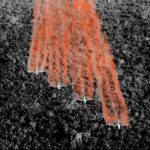 side, and 95% of the herbicides and defoliants used in the war were sprayed by the United States Air Force as part of Operation Ranch Hand. The remaining 5% were sprayed by the United States Chemical Corps, other military branches, and the Republic of Vietnam using hand sprayers, spray trucks, helicopters and boats, primarily around United States military installations…meaning that the majority of the chemicals were exposed to the Untied States Military. Many of the Vietnam veterans have felt betrayed by their own government. Many have felt that the government was well aware of the dangers of the chemicals they were spraying. I don’t know if they knew or not, but it seems like they should have suspected something. Years later, the effects of Agent Orange are well known and it was vicious.
side, and 95% of the herbicides and defoliants used in the war were sprayed by the United States Air Force as part of Operation Ranch Hand. The remaining 5% were sprayed by the United States Chemical Corps, other military branches, and the Republic of Vietnam using hand sprayers, spray trucks, helicopters and boats, primarily around United States military installations…meaning that the majority of the chemicals were exposed to the Untied States Military. Many of the Vietnam veterans have felt betrayed by their own government. Many have felt that the government was well aware of the dangers of the chemicals they were spraying. I don’t know if they knew or not, but it seems like they should have suspected something. Years later, the effects of Agent Orange are well known and it was vicious.

